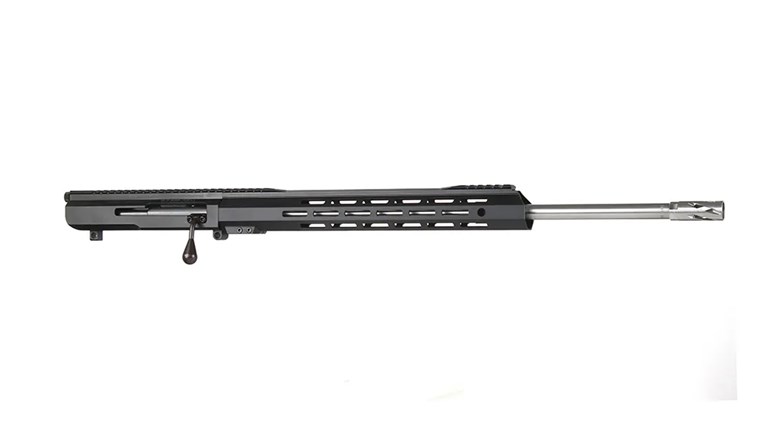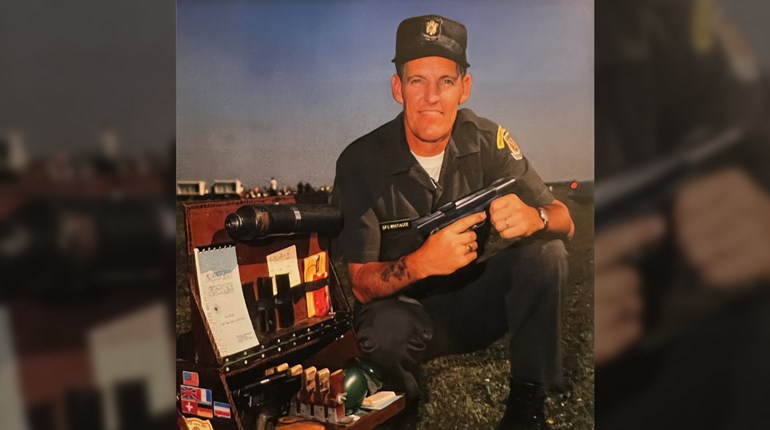
Nearly all bolt-action-rifle shooters have reloaded guns without external, detachable box magazines. Internal-magazine rifles are more the rule than the exception in the hunting, target shooting and competition worlds. But, few outside of military circles have had to cram cartridges into their gun's action with completely numb fingers, in darkness or when needing to "get back on the gun" and shoot before being shot. Whether shooting one of these "old school" turnbolts in a tactical environment, up against dangerous game or simply on a timed course of fire, it is necessary to develop techniques to get rounds into the internal magazine as efficiently as possible.

Back when a lighter, more agile version of me easily folded himself into oddball shooting positions in strange places, bolt-action rifles with non-external magazines were my only option. I was issued a pair of non-standard McMillan Brothers' .308 Win. and .300 Win. Mag. rifles. Most of the rest of the U.S. Army used—and many still do—the M24 SWS. Each of those rifles was built on a long action with a hinged floorplate, internal magazine. Conversely the USMC's M40 family of .308 Win. sniper rifles is built on a short action and—prior to the M40A5—also had hinged floorplates. None of these bolt-action rifles are easy to load quickly, but with practice, anyone can master a hasty refill when needed.
Early bolt-action military rifles had stripper clip guides for rapid topping off, but the use of riflescopes and their mounts typically prohibited stripper clip use. Back in the pre-box-mag days, I tried everything I could think of to keep spare rounds close at hand. The techniques I used to load my rifle on a nice flat range did not work for the old shoot-and-displace sniper game. I attached pouches with loose rounds high on my chest webbing so they would be accessible in the prone position. I tried wrist and sleeve-mounted pouches with ammo loops. I even tried the silly, plastic, belt-mounted ammo carriers some manufacturers still ship in their 20-round boxes. Of course I spray painted them first, but they were not made for rough-and-tumble use.
The carry system I eventually came up with was either a buttstock- or fore-end-mounted pouch, each with elastic ammo loops. As a lefty, I found the former worked best with a left-hand action since the cartridges rode the stock opposite my cheek and within easy reach of my firing hand. However when shooting a right-handed action, I have found that loading with my support hand is faster.
I prefer to have the spare cartridges as close to the action as possible. A cartridge holder attached to the fore-end works very well for this purpose. Modern day MOLLE gear is great for modularity, and I've seen several decent pouches designed for individual rounds of sniper ammunition. Wherever you decide to park your reloads, be sure they will stay in place. If there is any chance of needing to top-off the rifle in a hurry, practice your reloads realistically.

Carrying reloads close at hand is only half the problem with loose ammo. Getting the cartridges from your hand into the action in the proper orientation is a whole different battle. I have found stowing the cartridges primer up allows me to pull out and "stack" them between the thumb and forefinger of my loading hand. Once I have the appropriate number in hand, I feed one cartridge at a time toward the tips of my ring and middle fingers, using those fingertips to push the cartridge down and back, seating it under the internal magazine's feed lips.
The common mistake made when loading in a hurry is to push the cartridge straight down, and then try to feed another on top. If you make this mistake while loading a cartridge that uses all of the action's length—like .308 Win. in a short action—the tip of the round you just loaded will get hung up and prevent another cartridge from being fully inserted. That is about the time you will start to panic and push harder. At some point if you have completely jammed the action, you will decide to drop the hinged floor plate (if you have one), empty the magazine into your hand, close it and start over.
Like I said, practice, practice and practice. I recommend you work through this process to find efficiencies of movement, even when belly shooting on the range. If you can do it without ever taking your eye off your target(s), you have the hang of it. It is like practicing an efficient handgun draw from the holster. Several thousand iterations of repetitive motion will create the muscle memory needed to perform this potentially life-saving task if you are in a dangerous situation.
U.S. military snipers are finally being equipped to deal with rapid reloads. The Marines' M40A5 rifle and the Army's M24A2, A3 and XM2010 rifles all use detachable magazines. The semi-automatic M110 and other SR25 variants have always used 20-round box magazines. I was lucky to be in a specialized unit and was able to exchange my old McMillan's for detachable-magazine bolt guns just before Sept. 11, nicely complementing the semi-automatic .308 I already had. In my mind there is no place in a dangerous environment for slow-to-load guns, but the reality is we do not always get what we want and things seldom go according to plan—you go to war with the gun you have, not necessarily the gun you would prefer. Knowing how to reload on the fly is a key skill for any rifle shooter.




































